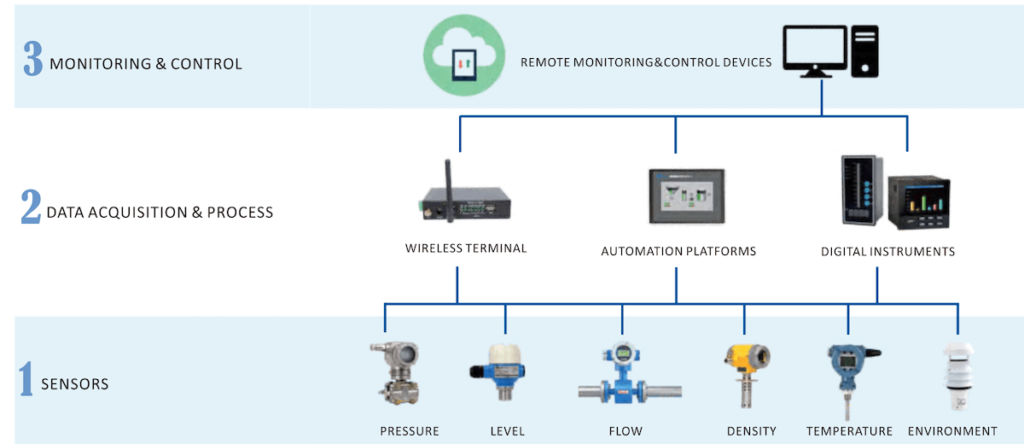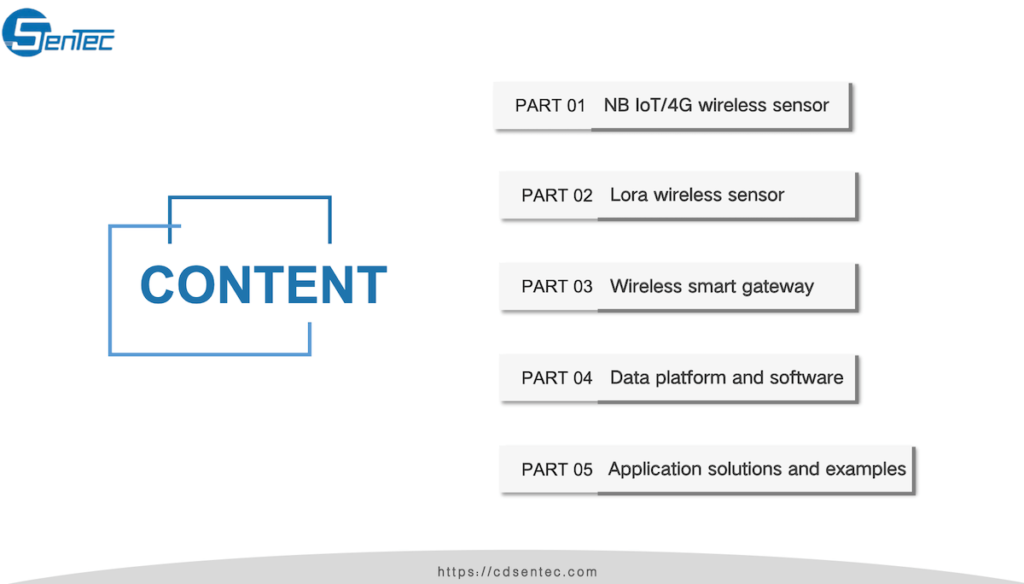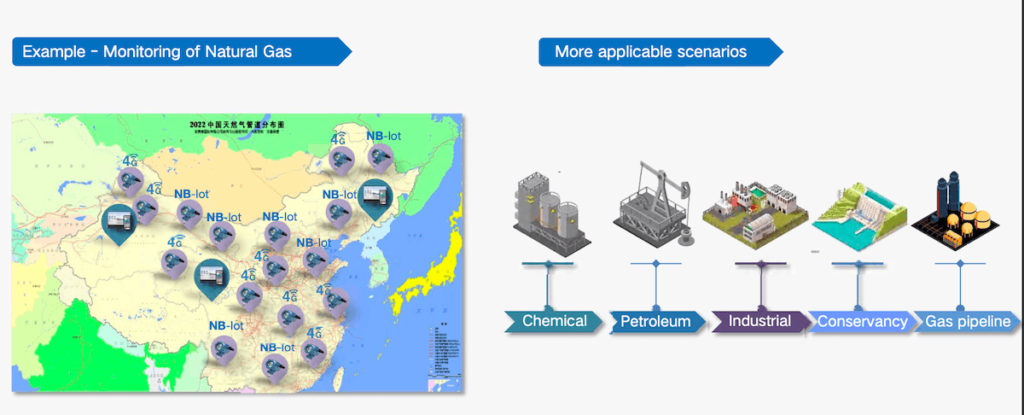Wireless sensor networks (WSNs) use a sensor network architecture that is applicable in various settings such as hospitals, schools, and roads. Understanding the wireless sensor networks architecture and wireless sensor networks application have become an essential knowledge for Iot technologies.
Introduction to wireless sensor networks
Wireless Sensor Networks (WSNs) play a crucial role in the Internet of Things (IoT) ecosystem. They enable seamless connectivity and real-time data collection from numerous sensors deployed in various locations. Taking advantages of wireless sensor networks represent a rapidly growing area of wireless sensor networks in iot technology.
What is wireless sensor network ?
A wireless sensor network (WSN) is a network of small, low-cost, and low-power wireless sensor nodes that communicate wirelessly over short distances. These wireless sensor nodes are equipped with transducers, microcomputers, transceivers, and power sources. WSNs are designed to collect data from the measured and transmit it to a base station or gateway for further processing and analysis.
Understanding the Architecture of Wireless Sensor Networks
The Wireless Sensor Networks architecture typically consists of three layers: the physical layer, the data link layer, and the application layer. Wireless sensor networks (WSNs) typically employ a hierarchical communication architecture to efficiently transmit and manage data. The wireless sensor communication architecture consists of multiple layers, each serving specific functions. Here is a breakdown of the typical architecture:

- Sensor Nodes: At the lowest level of the architecture are the sensor nodes. These are small, low-power devices equipped with sensors to collect data from the surrounding environment. Sensor nodes are responsible for data acquisition, processing, and transmission.
- Data Aggregation: The sensor nodes transmit the collected data to the next layer, known as the data aggregation layer. This layer is responsible for collecting and aggregating data from multiple sensor nodes to reduce redundancy and conserve energy. Aggregation techniques can include data fusion, compression, or summarization.
- Network Layer: The network layer handles the routing of data from the source (sensor nodes) to the destination (base station or sink node). It ensures efficient data transmission by selecting appropriate routing paths and managing network resources. Different routing protocols in wireless sensor networks, such as LEACH, SPIN, or AODV, can be used at this layer.
- Transport Layer: The transport layer provides reliable end-to-end communication between the source and destination. It ensures data integrity, error detection, and retransmission if necessary. Transport layer protocols like TCP or UDP can be used to facilitate reliable data transfer.
- Application Layer: The application layer is responsible for interfacing with the end-user or application. It processes the received data and presents it in a meaningful way. Examples of applications include environmental monitoring, home automation, industrial control, healthcare systems, and more.
- Base Station/Sink Node: The base station or sink node acts as the central point of communication in the network. It serves as a gateway between the WSN and external systems. The sink node receives the aggregated data from the network and forwards it to the intended destination, such as a server or user interface.
The communication architecture in wireless sensor networks is designed to optimize energy consumption, data reliability, and network scalability. Different protocols and algorithms are utilized at each layer to achieve efficient and effective communication within the network.
The wireless sensor types used in wireless sensor networks
Wireless sensor networks employ a wide variety of sensors, each designed to measure a specific environmental or physical parameter. Some of the most common sensor types include temperature sensors, pressure sensors, level sensors, humidity sensors, sound sensors, and vibration sensors.
Based on the signal types, Wireless sensor types have Lora sensor, 4G sensor, NB-IOT sensor etc. Each of these sensors is designed to work in a wireless sensor network, where they can collaboratively gather data and pass it through the network to the sink.
Enabling technologies for wireless sensor networks
The enabling technologies for wireless sensor networks include:
1. Network Topology Control: This technology focuses on optimizing the arrangement of nodes in the network to improve efficiency and reduce energy consumption. It involves techniques such as node clustering and routing algorithms to ensure effective communication .
2. Network Protocols: These protocols define the rules and procedures for communication between nodes in the network. They ensure reliable and efficient data transmission, addressing issues like packet loss and network congestion. Examples include ZigBee, Bluetooth, and Wi-Fi.
3. Data Fusion: Data fusion techniques involve combining data from multiple sensors to obtain more accurate and reliable information about the environment. This helps in reducing redundancy and improving the efficiency of data transmission.
4. Data Management: This technology involves the efficient storage, retrieval, and processing of data within the network. It includes techniques for data compression, aggregation, and filtering to minimize the amount of data transmitted and conserve energy.
5. Quality of Service (QoS): QoS refers to the ability of a network to provide reliable and timely delivery of data. In wireless sensor networks, QoS techniques ensure that critical data is prioritized and delivered with minimal delay or loss.
Types of Wireless Sensor Networks
There are several different types of wireless sensor networks that are defined by their structure. The three main types of wireless sensor networks are star, tree, and mesh networks.
Star networks are the simplest type of WSN. In a star network, each sensor node communicates directly with the sink. Although this type of network is easy to manage, it is not very flexible, and its reach is limited by the range of the individual nodes.
Tree networks are a step up from star networks. In a tree network, the sensor nodes are organized in a hierarchy, with the sink at the top. Data from the nodes is passed up the hierarchy until it reaches the sink. This type of network is more flexible than a star network, but it is still limited by the range of the individual nodes.
Mesh networks are the most complex type of WSN. In a mesh network, the sensor nodes are interconnected, with each node capable of communicating with several others. This type of network is highly flexible and robust, as it allows data to be routed through multiple paths, and it is not affected by the failure of individual nodes.
Understanding Wireless Sensor Networks through PPTs
Presentations, particularly PowerPoint presentations (PPTs), can be an effective tool for understanding complex topics like wireless sensor networks. A well-designed Wireless Sensor Networks PPT can break down complex concepts into manageable chunks, using visuals and clear language to convey information.

When it comes to understanding wireless sensor networks, a PPT can be particularly useful. It can illustrate the architecture of a WSN, showing how the different elements interact. It can also provide examples of different types of WSNs, and show how they are used in various applications.
Pioneering Applications of Wireless Sensor Networks
The application of wireless sensor networks have found a wide range of pioneering in various fields. In agriculture, for example, they are used for precision farming, where sensors are used to monitor a variety of factors like soil moisture, temperature, and nutrient levels. This data is then used to optimize irrigation and fertilization, leading to increased crop yields and more sustainable farming practices.
In industrial, wireless sensor networks are used for remote monitoring, where sensors are used to track the onsite measured data, such as pressure, level, temperature etc. remotely for outdoors.

In environmental monitoring, wireless sensor monitoring applications are used to track a variety of environmental parameters, from temperature and humidity to air quality and wildlife activity. This data can be used to monitor environmental changes, detect pollution, and inform conservation efforts.
Above application of wireless sensor networks example can provide valuable insights into measured data and help inform conservation efforts.
Learn more by youtube video tutorial:
Future Potential of Wireless Sensor Networks
The future potential of wireless sensor networks is vast. It still exist the challenges of wsn for Humanity, addressing these challenges is essential to harness the full potential of WSNs and ensure their successful deployment in various applications.
As technology continues to advance, we can expect WSNs to become even more versatile and powerful by various solutions of wireless sensor networks projects. In the future, we may see WSNs used in a wide range of new applications, from smart cities to personalized healthcare.
Choosing the Right Wireless Sensor Network for Your Needs
Choosing the right wireless sensor network for your needs can be a complex task. There are many factors to consider, from the specific requirements of your application to the capabilities of the different types of WSNs.
When choosing a WSN, it’s important to first consider your application. What kind of data do you need to collect? How many sensor nodes will you need? How far apart will they be? These are all important questions that can help you determine what kind of WSN you need.
Once you have a clear understanding of your needs, you can begin to consider the different types of WSNs. Do you need a simple star network, or would a more complex mesh network be more suitable? What kind of sensors will you need? What kind of range do you need from your sensor nodes?
If you still have no idea for your application solutions, SenTec professional team can help you any time online by their accumulated experiences. Contact them.
Conclusion: The Impact of Wireless Sensor Networks on Modern Technology
In conclusion, wireless sensor networks have had a profound impact on modern technology. They have transformed a wide range of sectors and have the potential to drive even greater change in the future.
As technology continues to advance, it’s clear that wireless sensor networks will continue to play a central role. They are a key component of the Internet of Things, and will be integral to the development of smart cities and personalized healthcare. They are, in short, a technology that is shaping our future.




